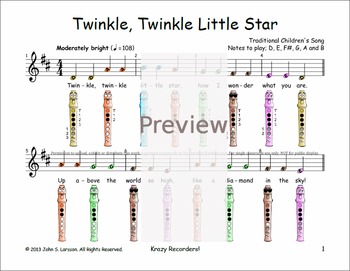

When starting out you don’t want to get too much over your head when learning how to play. So, try and practice some familiar tunes first, which is also a reason why all music textbooks start with nursery rhymes and similar easy songs. This can also be helpful in learning where notes are and how to play them, especially for your fingering technique on a recorder. Learning how to play new songs takes some time and it’s always better if you already have in your mind how the tune is going to unravel before you play the next note. This will, again, help you master the basics, before moving on to more complex stuff. This means that you shouldn’t expect to master difficult pieces with tons of rhythm changes but opt for a familiar, easy rhythm like 4/4 or ¾. When starting to learn a new instrument, you should always start with easier rhythms. This will help you develop your playing skills more accurately and precisely (in this instance your fingering technique). Because you don’t have the skills yet to play faster pieces, the slower you can get is better. Not just on a recorder, but playing slow songs is crucial at the beginning of playing any instrument. This is all you need to master this song and get your music career started! What Makes a Song Easy on Recorder? Hot Cross Buns uses just three notes and a slow playing tempo. It does not store any personal data.Finishing this list with the easiest song out of all on this list. The cookie is set by the GDPR Cookie Consent plugin and is used to store whether or not user has consented to the use of cookies. The cookie is used to store the user consent for the cookies in the category "Performance".


This cookie is set by GDPR Cookie Consent plugin. The cookie is used to store the user consent for the cookies in the category "Other. The cookies is used to store the user consent for the cookies in the category "Necessary". The cookie is set by GDPR cookie consent to record the user consent for the cookies in the category "Functional". The cookie is used to store the user consent for the cookies in the category "Analytics". These cookies ensure basic functionalities and security features of the website, anonymously. Necessary cookies are absolutely essential for the website to function properly. Lower Register Lower register chromatic Upper Register Upper register chromatic As you get more advanced: The bottom and Top Notes Bottom and top notes The first one in each case can be considered the “regular” fingering. In some cases alternative fingerings are shown. Here we have all the notes of the lower and upper registers including the sharps and flats (AKA the chromatic scale) (The octave key is the immediately above the left hand thumb rest) Upper register key of C First steps: Basic Fingering charts (with all sharps and flats) Lower Register Lower register key of C Upper Register For more alternative fingerings see here.On this page we only show the standard range of the saxophone (up to F on older instruments and up to F# on many newer ones) but we also have a chart of fingerings for the extended (altissimo range) The fingerings here are good for beginners to learn, but there are some more alternative fingerings. On this page I have only included the most common fingerings and a couple of alternative fingerings for the standard range.

Of course, because the saxophone is a transposing instrument, the same fingering chart applies whether you play soprano, alto, baritone or tenor saxophone.Īfter that we have charts for the other notes. These are ideal for absolute beginners who don’t want to be overwhelmed by the entire chart of all fingerings. See where the money goes…įirst we have a couple of very basic fingering charts which show you the saxophone fingerings for the lower and upper register in the key of C.


 0 kommentar(er)
0 kommentar(er)
